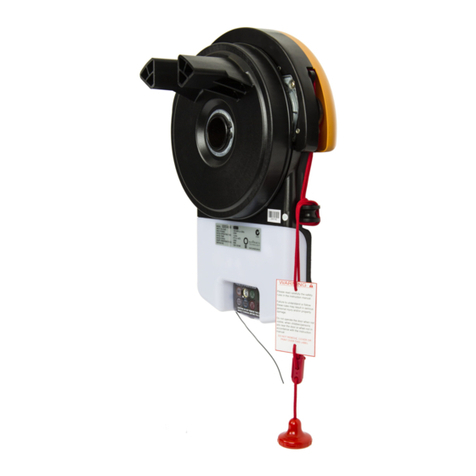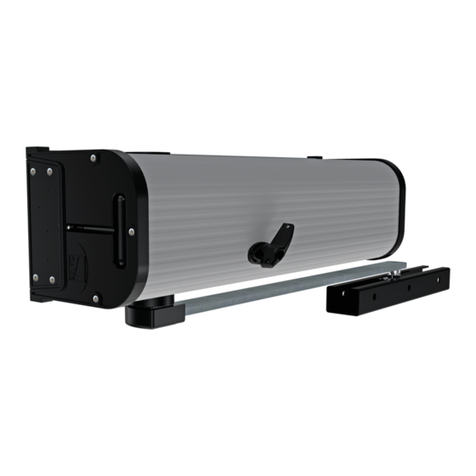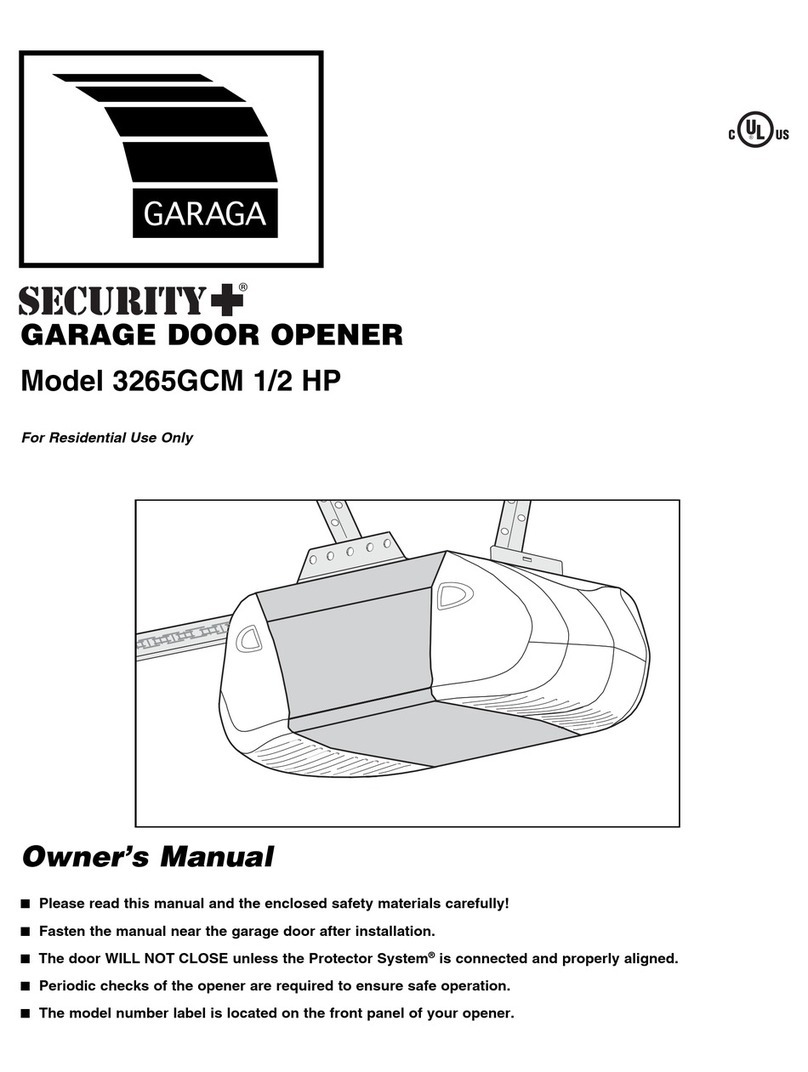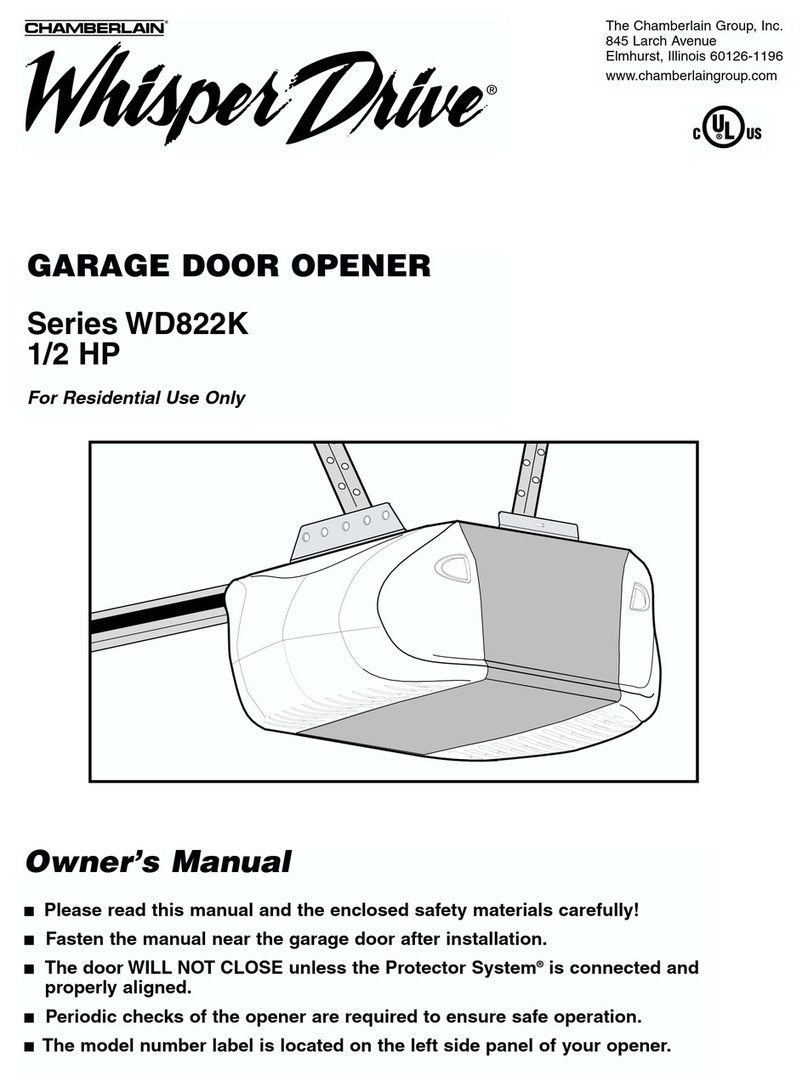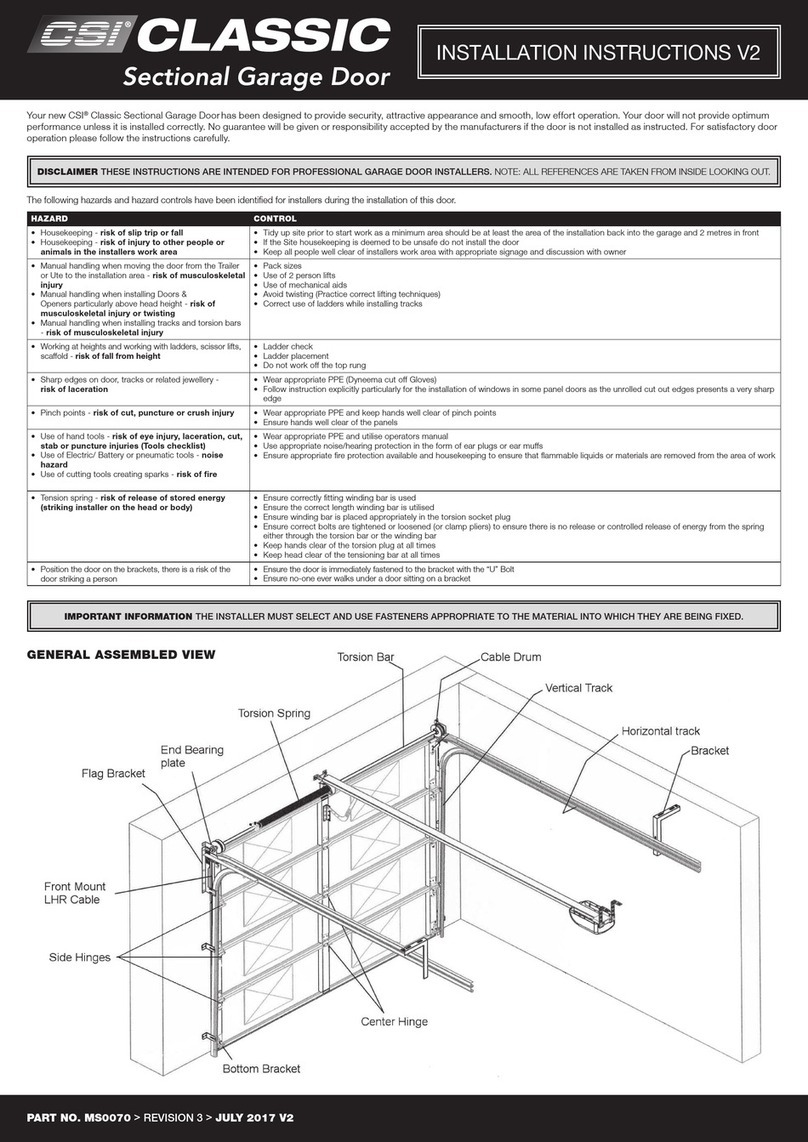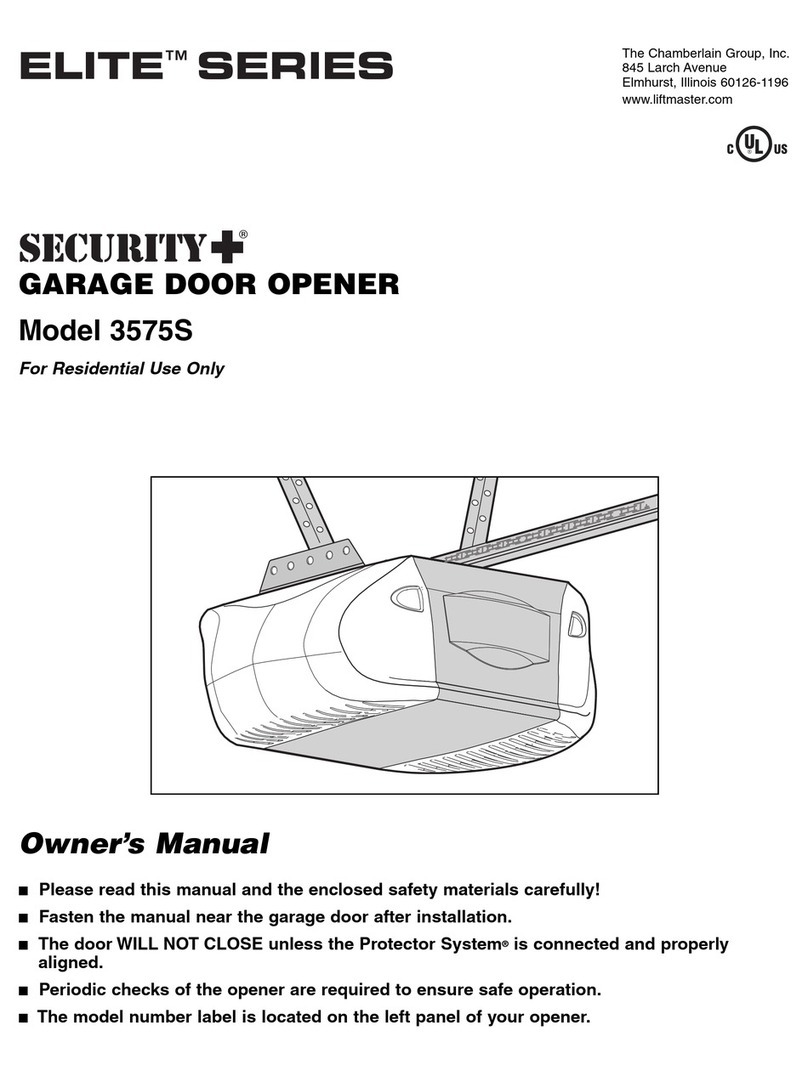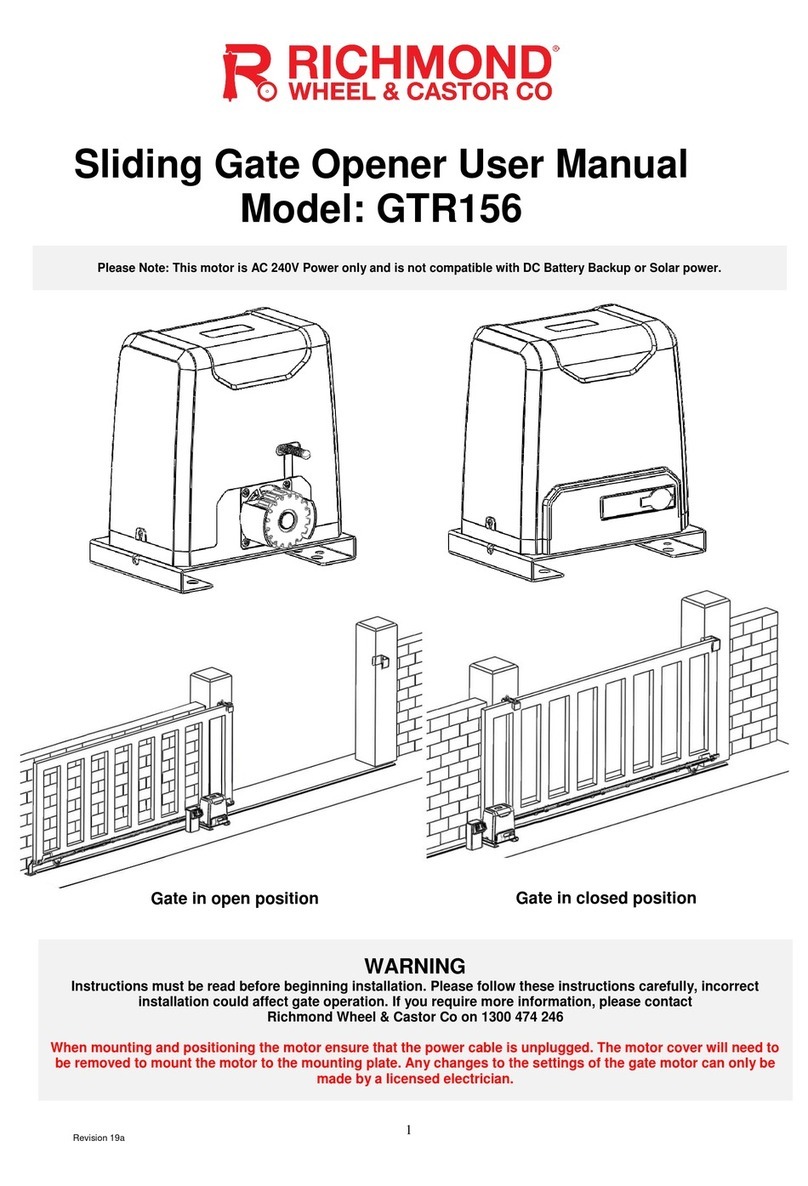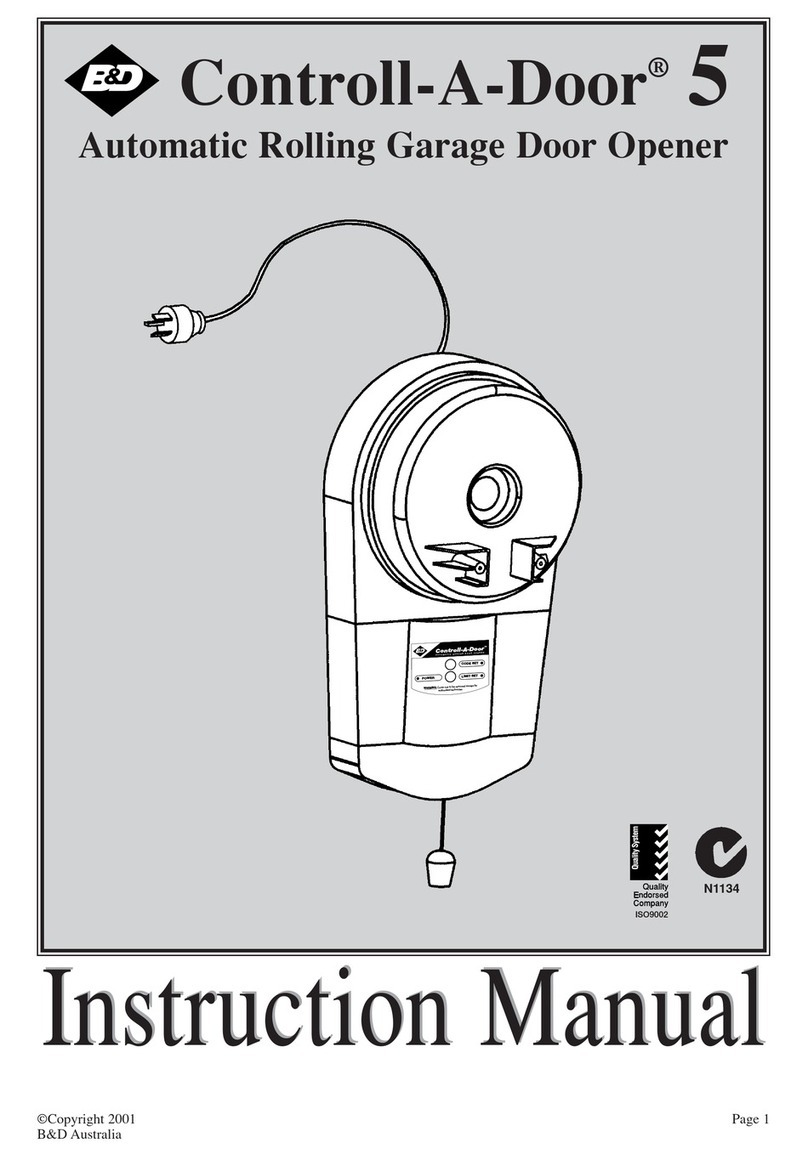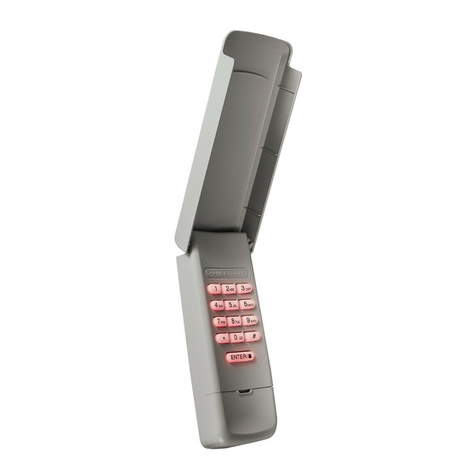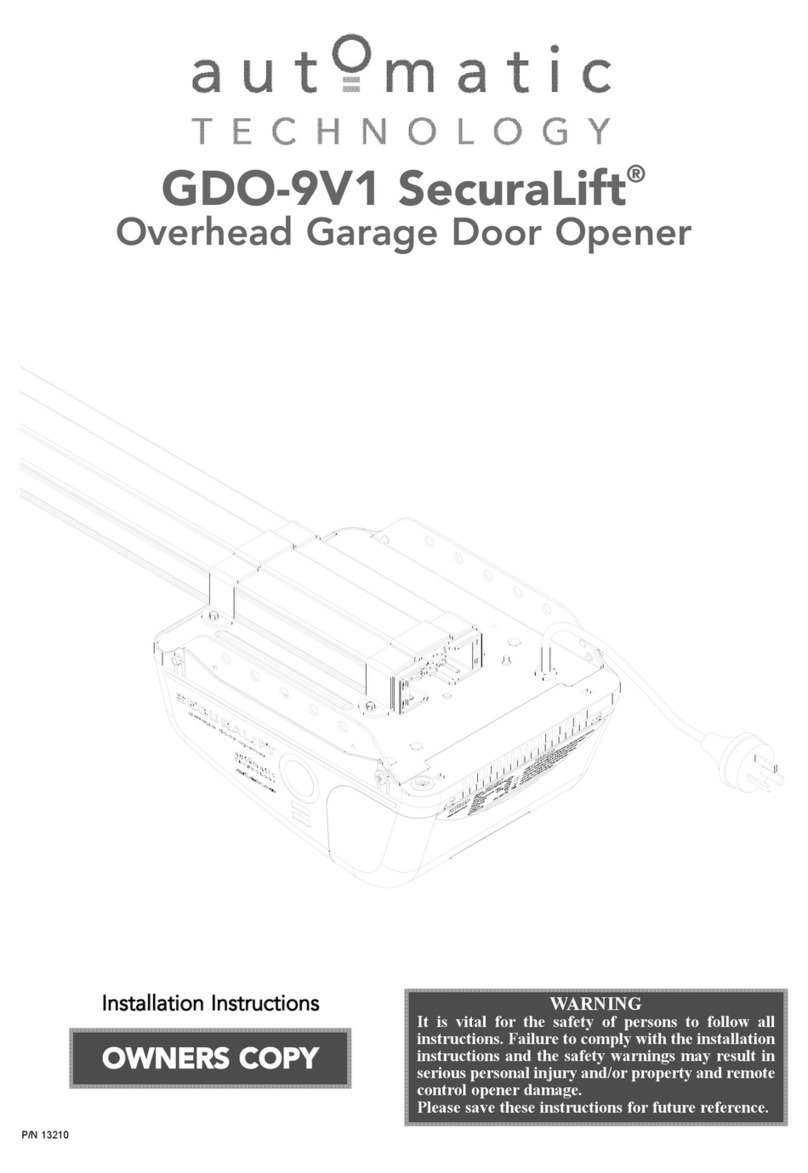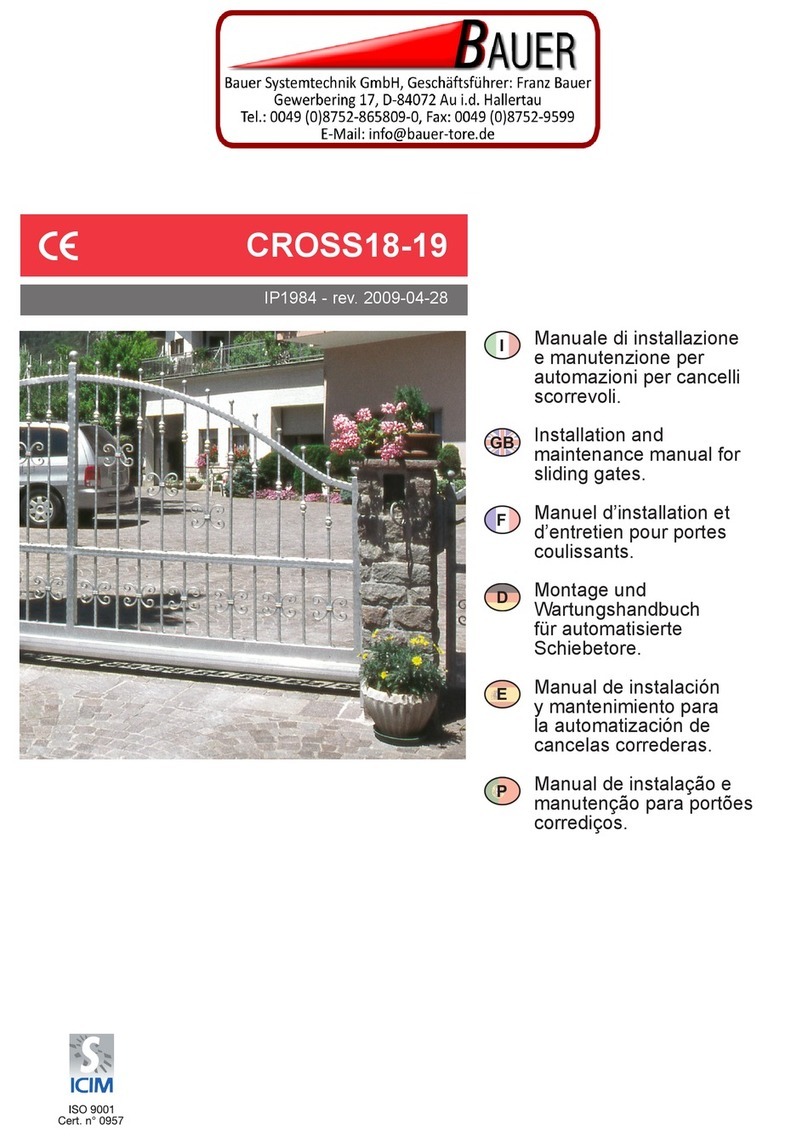4
FEATURES
Thank you for purchasing the ATA Axess
Automatic Opener. This opener is
designed to suit commercial heavy duty
panel or sectional doors. The components
and materials used in this opener are of the
latest technology and highest quality.
Listed below are some of the many
features.
OPERATION
To operate the door opener simply activate
one the integrated controller’s inputs using
a remote control transmitter, keypad or
many other devices such as key switch,
swipe card, loop detector, etc. In response
the door will then open, stop or close as
requested. The opener can also be
configured to close automatically using
one of several auto-close modes.
OPERATOR CONSOLE
Incorporated into the integrated controller
is a simple to use operator console which
consists of several buttons and a display.
The console offers a user freindly menu
system that greatly simplifies installation,
adjustment and status indication. Features
include editing transmitter storage and
names, setting various parameters,
selecting specialised operating modes and
performing system diagnostics.
STATUS INDICATION
The status of the door opener can be
determined at anytime by observing the
console’s screen. When the MAIN
SCREEN is displayed, the current
position of the door or the result of the last
movement can be found. The display will
also show the count down progress of the
auto-close timers. Any active input will
also be displayed along with the state of
various features such as periodic service.
HOPPING CODE TRANSMITTERS
The opener incorporates SecuraCode®
hopping code remote control receiver.
Hopping code transmitters generate a new
encrypted access code (chosen at random)
each time they are activated. As the
receiver is able to track the encryption
sequence and reject access codes that have
already been received, it is able to reject
unauthorised access requested attempted
by thieves. In addition to this, each
transmitter has a unique serial number - so
no two are alike. Further, with a huge error
rejection rate which allows less than one
error in 1019 (10 quintillion), the security
of the remote control system is greatly
enhanced.
SECURITY CODE STORE
The opener uses state of the art technology
in storing your selected transmitter codes.
Up to 511 different transmitters can be
stored in the opener’s memory with the
facility to assign a 11 character name to
each transmitter.
REMOTE LIMITS POSITIONING
During installation, a hand held transmitter
can be used when setting the door travel
limits. This allows the installer to closely
observe and control the doors movement
from any position rather than having to be
within arms reach of the console.
CONTROLLING LOCK AND
LIGHTS
The controller has dedicated outputs for
operating a electric lock and warning or
courtesy lights. The timing of these
outputs can be adjusted to suit your needs.
EXTENSIVE OPERATING MODES
VIA CONTROL INPUTS AND
REMOTE CONTROL
The integrated controller can be
configured to operate in many different
ways via its 7 control and safety inputs
which include P.E, OPEN, STOP, CLOSE,
OSC, SWIPE and PEDESTRIAN. Remote
control operation is provided with each
transmitter’s button being able to be con-
figured to operate one of OSC,
PEDESTRIAN, SWIPE, CLOSE, OPEN,
STOP, LIGHT or VACATION functions.
The controllers functionality is further
enhanced by 4 auto-close modes, 3 P.E
response modes and two pedestrian
response modes. For details refer to
relevant instruction manual sections.
MANUAL OPERATION
The opener is equipped with a unique
manual operation device. If the power to
the opener is disrupted for any reason the
shuttle can be disengaged and the door can
move manually. When power is restored
simply re-engage the shuttle to resume
automatic operation.
